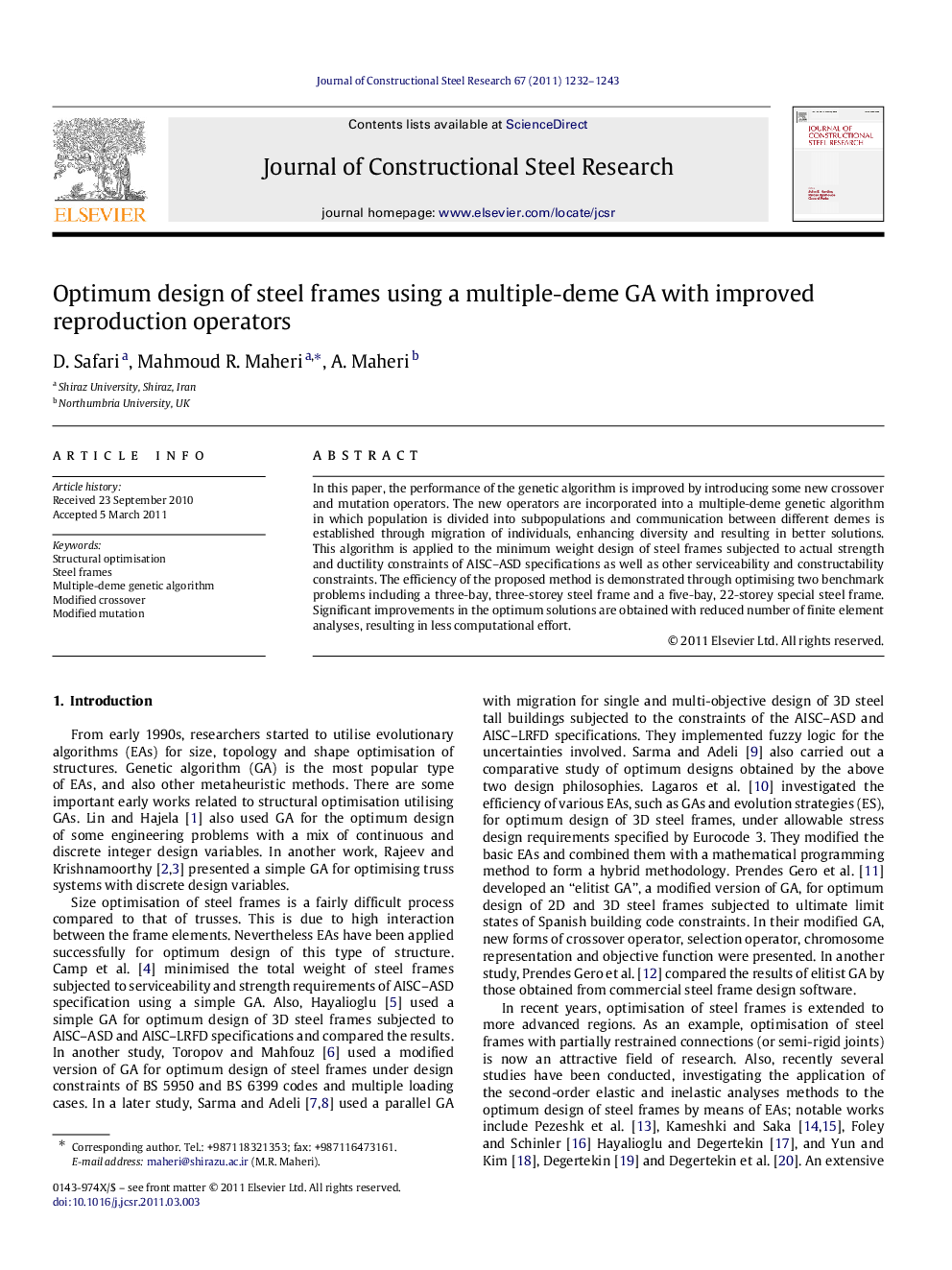| Article ID | Journal | Published Year | Pages | File Type |
|---|---|---|---|---|
| 285445 | Journal of Constructional Steel Research | 2011 | 12 Pages |
In this paper, the performance of the genetic algorithm is improved by introducing some new crossover and mutation operators. The new operators are incorporated into a multiple-deme genetic algorithm in which population is divided into subpopulations and communication between different demes is established through migration of individuals, enhancing diversity and resulting in better solutions. This algorithm is applied to the minimum weight design of steel frames subjected to actual strength and ductility constraints of AISC–ASD specifications as well as other serviceability and constructability constraints. The efficiency of the proposed method is demonstrated through optimising two benchmark problems including a three-bay, three-storey steel frame and a five-bay, 22-storey special steel frame. Significant improvements in the optimum solutions are obtained with reduced number of finite element analyses, resulting in less computational effort.
► Novel crossover and mutation operators are shown to markedly improve GA design optimisation of steel moment frames. ► It is shown that the multiple-deme PGA results in improved optimum design, especially when the search space is large. ► Combined use of multiple-deme PGA and the proposed crossover and mutation operators considerably reduce the computational effort of optimisation.
